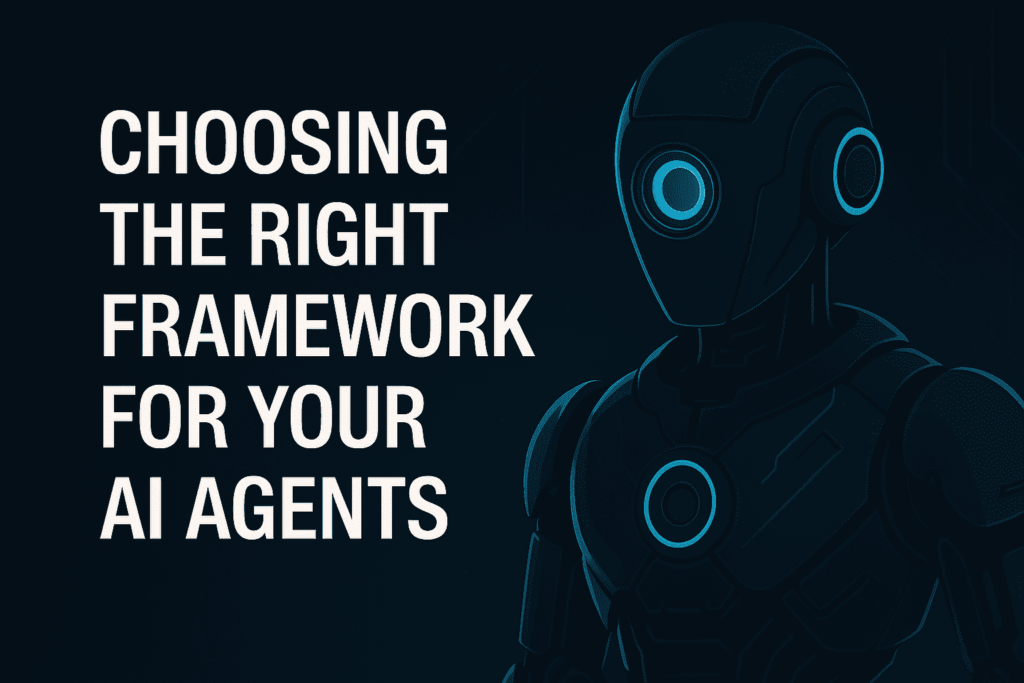When designing an AI agent workflow, selecting the right platform can be a game-changer. Whether you’re building a quick prototype or a production-grade AI system, understanding the landscape of available tools is crucial. In this post, we’ll walk through the most popular frameworks and compare them based on use case, scalability, complexity, and ease of use.

1. n8n: Low-Code Automation for a Quick Start
Best For: Rapid prototyping, MVPs, automation with light AI logic
n8n is an open-source, low-code workflow automation tool. It’s perfect for quickly building automation flows by connecting APIs, AI models (like OpenAI), and services.
Pros:
- Visual drag-and-drop workflow builder
- Easy integration with 300+ services
- Ideal for non-developers or small teams starting fast
Cons:
- Not purpose-built for AI agent logic
- Limited handling of stateful agents or complex logic trees
Use n8n when you want to get something up and running fast without deep LLM logic or memory requirements.
2. LangChain: The LLM Application Builder
Best For: Building production-ready apps powered by LLMs
LangChain is an open-source Python/JavaScript framework tailored for building applications that use language models. It provides tools for chaining prompts, integrating memory, retrieving documents, and calling APIs.
Pros:
- Modular design for memory, tools, and chains
- Well-supported and widely adopted
- Easy to plug in OpenAI, Cohere, Hugging Face, etc.
Cons:
- Workflows are primarily linear
- Requires coding and deeper understanding of LLM use
Great if you’re building a serious LLM-powered application where chaining and context management are needed.
3. LangGraph: For Complex, Stateful Workflows
Best For: Multi-agent, stateful, or non-linear AI applications
LangGraph builds on LangChain by adding graph-based state management. It supports non-linear workflows and dynamic agent coordination, making it ideal for more advanced AI systems.
Pros:
- Graph-based architecture for branching workflows
- Persistent memory and inter-agent messaging
- Built-in state machine logic
Cons:
- Advanced setup
- Requires more engineering resources and design upfront
Use LangGraph when you need complex agent behaviors, decision loops, and rich, stateful logic.
4. MCP Servers: Dynamic Tools for LLMs
Best For: Scalable and dynamic integration between AI agents and external tools
The Model Context Protocol (MCP) is an emerging standard for connecting AI agents to tools, APIs, and services dynamically. It’s ideal for building intelligent agents that can self-discover capabilities and orchestrate workflows.
Pros:
- Tool discovery and usage at runtime
- Enables highly modular agent design
- Designed for scale and interoperability
Cons:
- Still early-stage with limited ecosystem
- Requires protocol-compliant tool design
MCP is your go-to when you’re aiming for flexible, dynamic, and tool-driven AI agent execution.
5. Agent File (.af): Portable Stateful AI Agents
Best For: Portability and collaboration on AI agents
The .af file format is a new open standard designed to encapsulate an AI agent’s tools, memory, parameters, and behaviors. It’s ideal for teams that want to create portable, shareable, and version-controlled agents.
Pros:
- All-in-one agent portability
- Easy versioning and collaboration
- Clear structure of agent capabilities
Cons:
- Early adoption phase
- Mainly supported in newer ecosystems like Letta
If you’re working in a collaborative environment and want to build plug-and-play agents,
.afis worth exploring.
Final Thoughts
Here’s a quick cheat sheet to help you decide:
| Use Case | Best Tool(s) |
|---|---|
| MVP / Quick Start | n8n |
| LLM App (Production) | LangChain / MCP / .af |
| Complex Agent Workflows | LangGraph |
| Tool-Oriented Agents | MCP |
| Shareable Stateful Agents | Agent File (.af) |
Each of these tools has its own sweet spot. Start with n8n if you want fast results, and move to LangChain, MCP, or LangGraph when you’re ready to scale or handle more complex interactions.
Happy building!